仿射變換透射變換單應性矩陣
- estimateRigidTransform():計算多個二維點對或者影象之間的最優仿射變換矩陣 (2行x3列),H可以是部分自由度,比如各向一致的切變。
- getAffineTransform():計算3個二維點對之間的仿射變換矩陣H(2行x3列),自由度為6.
- warpAffine():對輸入影象進行仿射變換
- findHomography: 計算多個二維點對之間的最優單對映變換矩陣 H(3行x3列) ,使用最小均方誤差或者RANSAC方法 。
- getPerspectiveTransform():計算4個二維點對之間的透射變換矩陣 H(3行x3列)
- warpPerspective(): 對輸入影象進行透射變換
- perspectiveTransform():對二維或者三維向量進行透射變換,也就是對輸入二維座標點或者三維座標點進行投射變換。
- estimateAffine3D:計算多個三維點對之間的最優三維仿射變換矩陣H (3行x4列)
- transform():對輸入的N維向量進行變換,可用於進行仿射變換、影象色彩變換.
- findFundamentalMat:計算多個點對之間的基矩陣H。
- 問題1:如何計算3個二維點對之間的仿射變換矩陣?
- 問題2:如何計算多個二維點對之間的仿射變換矩陣(使用誤差最小準則 )?
- 問題3:如何計算4個二維點對之間的透射變換?
- 問題4:如何計算多個三維點對之間的仿射變換?
- 問題5:如何對輸入影象進行仿射變換?
- 問題6:如何對輸入影象進行透射變換?
- 問題7:如何對輸入的二維點對進行仿射變換?
- 問題8:如何對輸入的三維點對進行投射變換?
findHomography 函式是求兩幅影象的單應性矩陣,它是一個3*3的矩陣,但這裡的單應性矩陣和3D重建中的單應性矩陣(透視矩陣3*4)是不一樣的。之前一直混淆了兩者的區別。 這裡求兩幅影象的單應性矩陣,只是利用多元方程組初步求解出H矩陣,然後利用迭代最小化反投影誤差的方式進一步精確計算出H。H=(h11,h12,h13; h21,h22,h23; h31,h32,h33) C++:
Parameters:
- srcPoints – Coordinates of the points in the original plane, a matrix of the type CV_32FC2 orvector<Point2f> .
- dstPoints – Coordinates of the points in the target plane, a matrix of the type CV_32FC2 or avector<Point2f> .
- method –
Method used to computed a homography matrix. The following methods are possible:
- 0 - a regular method using all the points
- CV_RANSAC - RANSAC-based robust method
- CV_LMEDS - Least-Median robust method
- ransacReprojThreshold –
Maximum allowed reprojection error to treat a point pair as an inlier (used in the RANSAC method only). That is, if

then the point
 is considered an outlier. If srcPoints and dstPoints are
measured in pixels, it usually makes sense to set this parameter somewhere in the range of 1 to 10.
is considered an outlier. If srcPoints and dstPoints are
measured in pixels, it usually makes sense to set this parameter somewhere in the range of 1 to 10. - mask – Optional output mask set by a robust method ( CV_RANSAC or CV_LMEDS ). Note that the input mask values are ignored.
程式碼移植,菜鳥請教:
1.此函式具體是怎樣求解方程的呢?單應性矩陣有8個獨立元素:H = h00 h01 h02 手動計算前兩行元素與函式輸出結
h10 h11 h12
h20 h21 1
果接近,但h20和h21只能得到比例且比例與所選點座標有關,感覺解不唯一,請問大神可以告知這兩個元素是怎樣確定的嗎?
2.找不到cvFindHomography()原始碼,能告訴從哪裡能獲得嗎?或者直接發給我就更好啦!謝!
最近學習有關findhomography的呼叫,請問經過RANSAC挑選適合的特徵點後,
是用什麼方法求出八個引數? (Levenberg-Marquardt? gradient descent? 還是其他方法)
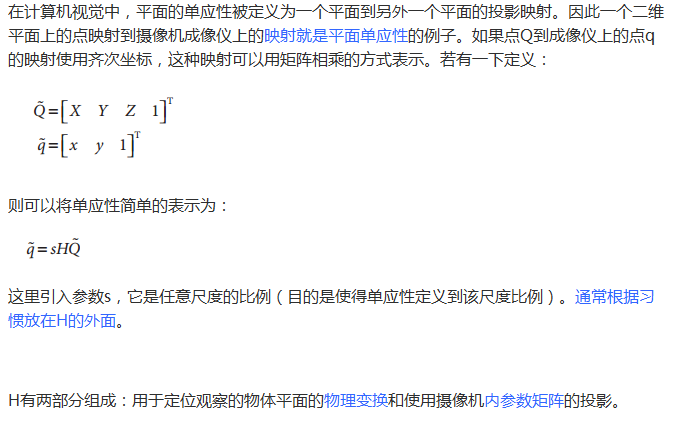
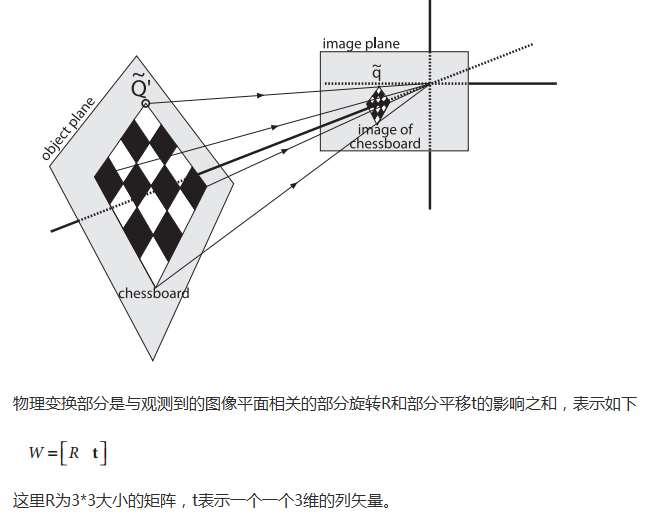
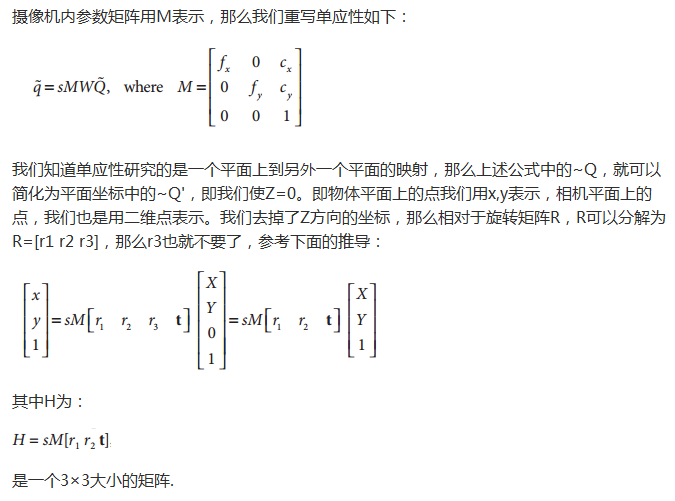
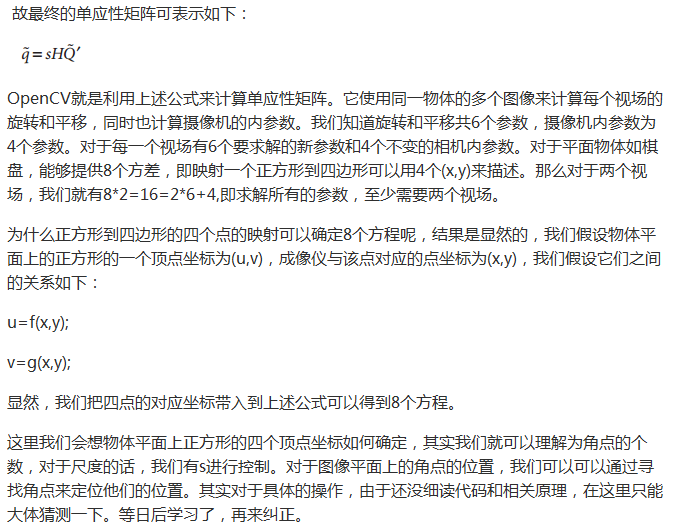
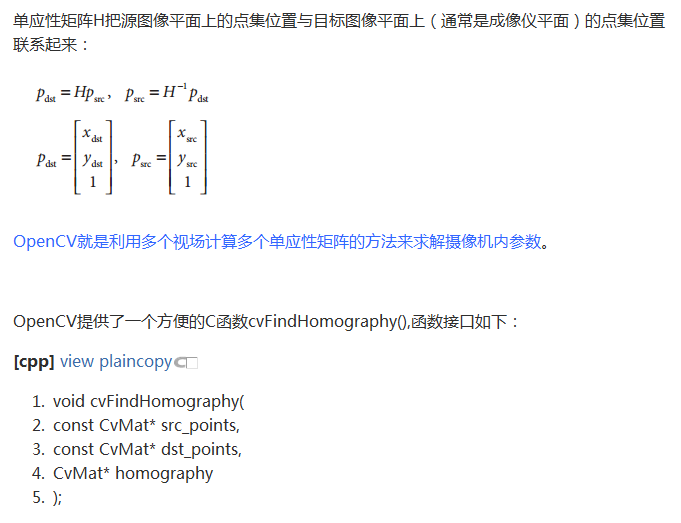
1、src_points,dst_points為N×2或者N×3的矩陣,N×2表示點是以畫素座標表示。N×3表示以齊次座標表示。
2、homography,為3*3大小的矩陣,用來儲存輸出的結果。
